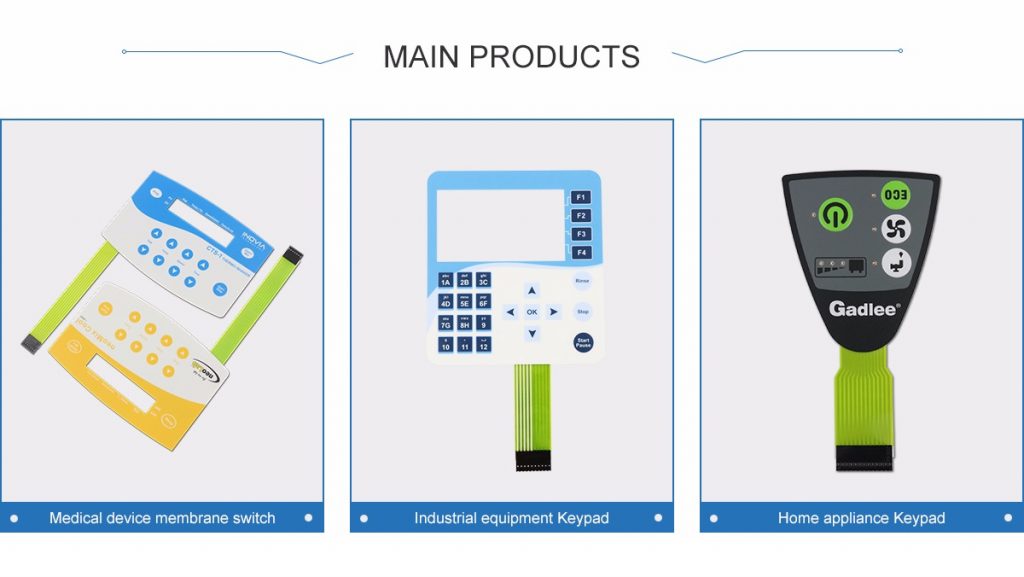Contact
Write to Us And We Would Be Happy to Advise You.
Do you have any questions, or would you like to speak directly with a representative?
By hqt

As technology advances, so too do the materials and components used to create the gadgets and devices of the future. One such component that is taking the world of technology by storm is the switch membrane. This type of switch is revolutionizing how we interact with our technology and is quickly becoming an industry favorite. But what is a switch membrane, why is it so popular, and how can you capitalize on this technology? Keep reading to learn the answers to these questions and more as we explore the benefits of switch membranes and their uses in the tech world.
Switch membranes are a type of switch that works by pressing a membrane or a flexible surface. This type of switch is incredibly versatile and can be used in a wide variety of applications. The unique design of switch membranes allows them to be used in areas that traditional switches are not suitable for, such as environments that are exposed to moisture or dust.
Switch membranes are made up of three distinct layers. The top layer is typically made of a flexible material such as plastic, while the middle and bottom layers are made of a conductive material such as metal. When the switch is pressed, the conductive layers create an electrical current, which is then used to activate the switch.
Switch membranes offer a number of benefits that traditional switches do not offer. One of the most notable benefits is their versatility. Thanks to their unique design, switch membranes can be used in a wide variety of applications, from medical devices and consumer electronics to industrial machinery and automotive components.
Switch membranes are also incredibly durable. Unlike traditional switches, switch membranes are not susceptible to corrosion or wear and tear. This makes them ideal for use in harsh environments, such as those that are exposed to high levels of moisture or dust.
Switch membranes are also very reliable. Unlike traditional switches, switch membranes are not prone to contact bounce, which can create unreliable connections and affect the performance of the device. This makes switch membranes an ideal choice for applications that require a reliable connection.
Finally, switch membranes are incredibly cost-effective. Thanks to their unique design, switch membranes require fewer components than traditional switches, resulting in a lower cost of production. In addition, switch membranes have a longer lifespan than traditional switches, resulting in fewer replacement costs over time.
There are a number of different types of switch membranes available, each with its own unique benefits. The most common types of switch membranes include:
In order for a switch membrane to be effective, it must have certain properties. The most important of these properties are:
Designing with switch membranes can be a challenge, as there are a number of factors to consider when selecting the right switch membrane for your application. The most important of these factors are:
The manufacturing process of switch membranes is complex and involves a number of steps. The most important of these steps are:
Switch membranes are used in a wide variety of applications, from consumer electronics to medical devices. Here are a few of the most common applications of switch membranes:
The switch membrane industry is rapidly evolving, with new technologies and applications being developed all the time. Here are a few of the most notable trends in the switch membrane industry:
Selecting the right switch membrane for your application can be a challenge, as there are a number of factors to consider. Here are a few tips to help you select the right switch membrane for your application:
Switch membranes are quickly becoming an industry favorite due to their unique design and versatility. Switch membranes offer a number of benefits, such as increased durability, improved sensitivity, increased versatility, and improved cost. In addition, switch membranes are used in a wide variety of applications, from automotive components and medical devices to consumer electronics and industrial machinery. When selecting the right switch membrane for your application, it is important to understand the requirements of your application, consider the environmental conditions, consider your budget, and research your options. With the right switch membrane, you can unlock the benefits of this technology and take your technology to the next level.
Do you have any questions, or would you like to speak directly with a representative?